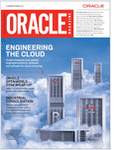Posted by Kashif Manzoor on 25th July 2013
Preparation of clone for Production eBusiness suite is a day to day work for Apps DBAs in any organization and also time consuming exercise. Sometime Functional/Development team will raise daily request to prepare fresh clone or even Oracle Support Analyst will release any solution through raised SR with the pre-set note that apply solution on fresh clone of Production. During the cloning process if error occurs due to any factor Apps DBA has to drill down to different locations to read out error logs and understand the reason for failure, it is quite time consuming and effort taking work.
Oracle Proactive Support Team has released new utility to consolidate error information from clone log files from various locations into an HTML report. A cloning activity may generate up to a dozen separate log files. This new Log Parser utility will allow you to view relevant snippets of each log at one time. Additionally the Log Parser will do some basic configuration and health checks of the environment and also may provide leads to solving problems. Major benefits of using this utility are:
- Save time and efforts: will reduce considerable time and efforts to validating clone logs during clone process- Consolidates over 12 cloning log file types in a single HTML report!
- Quick Fix of errors – Parses log file; exposes log snippets showing errors & warnings
- Links solutions to key error messages in My Oracle Support content, for instant error-fix recommendations
As of now Clone Log Parser utility is available for:
- 11i (11.5.9+)
- R12 (12.0.x, 12.1.x)
Log Parser will consolidate error logs on all cloning, oraInventory and relinking logs in the following sequence.
- StageDBTier.log
- StageAppsTier_.log
- ApplyDBTier.log
- ApplyDatabase.log
- ApplyDBTechStack.log
- ApplyAppsTechStack.log
- ApplyAppsTier.log
- CloneContext.log
- make_.log, make.log
- adconfig.log
- ohclone.log
- adcrdb_.txt
- NetServiceHandler.log
- setup_stubs.log
- Central/Global oraInventory/logs directory and all sub-directories,
for any files with a .err, .log or .txt extension
Following are the main log files locations; DBAs usually refer to identify any error from these files:
Preclone (adpreclone.pl) log files in source instance
- Database Tier-$ORACLE_HOME/appsutil/log/$CONTEXT_NAME/(StageDBTier_<time>.log)
- Apps Tier – $INST_TOP/apps/$CONTEXT_NAME/admin/log/ (StageAppsTier_<time>.log)
Post-Clone (Adcfgclone.pl) log files in target instance
- Database Tier- $ORACLE_HOME/appsutil/log/$CONTEXT_NAME/ApplyDBTier_<time>.logApps Tier
- $INST_TOP/apps/$CONTEXT_NAME/admin/log/ApplyAppsTier_<time>.log
Installation of Clone Parser utility is very simple, no specific configuration requires, will follow 3 steps….unzip, run, view report
Download from Oracle My Support note E-Business Suite Clone Log Parser Utility (Rapid Clone)[VIDEO] (Doc ID 1447553.1) and install separately on db tier and apps tier separately through unzip utility.

After download, you can install simply unzipping to specified directory as per note, it is very important installation must be done as per specified path.

Now you can unzip the file on the directory like $ORACLE_HOME/appsutil/clone by creating $ORACLE_HOME/appsutil/clone/LogParser/

We need to install separate Clone Log Parser utility for the dbTier and appsTier. for apps tier unzip LogParser.zip into <COMMON_TOP>/clone/


EndNote:
E-Business Suite Clone Log Parser Utility (Rapid Clone)[VIDEO] (Doc ID 1447553.1)
Tags: clone, Installation, log parser
Posted in AOL, Installation | No Comments »
Posted by Kashif Manzoor on 30th April 2013
What is a Load Balancer?
Hardware or software which assigns workload to a set of servers in order to optimally use computing resources A server load balancer intercepts traffic destined for a site/application, and redirects it to various machines in the cluster as per method load-balancing. This optimizes use of system resources, resulting in higher performance, availability and scalability. Load balancers are recommended for mission-critical enterprise deployments of web-based applications such as Oracle E-Business Suite.
A load balancer consists of a virtual server which comprises an IP address and port. This virtual server is bound to a number of physical services in a server farm. A client sends a request to the virtual server, which then selects a server in the server farm and directs this request to the selected physical server.
We can outline the major functions of a server load balancer:
- Intercepts network traffic destined for a site.
- Splits the traffic into individual requests and decides which machines in the cluster are to receive these requests.
- Maintains a watch on the available machines, ensuring that they are responding to the traffic; if they are not, they are taken out from the load-balancing pool so that traffic can be routed to the machines that are available.
- Provides redundancy by employing more than one machine for fail-over scenarios.
- Provides context-aware load distribution, so that applications that need to maintain session-persistent connections do not fail. This feature of load balancer is very important for Oracle E-Business Suite as the various modules require session-persistent connections. To support this feature, the load balancer reads the cookies set on each request made by the client, and, based on the information in the cookie, it can rewrite the header information, then send the request to the appropriate machine in the cluster, where its session is maintained.
When is a Load Balancer required?
When we experience increase in user volumes- max utilization, need to add more resources to effectively service users.
When you wish to implement scalability and fault tolerance
A load balancer is essential when you have more than one application tier in an instance where at least 2 of the application tiers share a common entry point. You can have multiple application tiers without a load balancer but they must have an independent entry point.
What are the different types of Load Balancers?
- Hardware HTTP load balancers (recommended)
- DNS load balancers – network layer (Limitations include: unpredictable load distribution, DNS caching issues by the browser, lack of fault tolerance. Requires OC4J clustering)
- Software HTTP load balancers (not recommended)–(Limitations include: Most software packages cannot handle large sites or complex networks. Packages that will support larger systems require an abundant amount of hardware.)
Tags: Load Balancer, R12
Posted in AOL, Installation | No Comments »
Posted by Kashif Manzoor on 26th January 2013
Few days back I thought, let’s try to install Oracle fusion applications and started glancing different docs available and  finally reach to a question number 1, what hardware required? Do I have that infrastructure to support me for this thrust? All these questions played vital role to write my earlier post on hardware sizing for Oracle Fusion Applications. In the last whatever hardware was available with me, just started to try out as an experimental basis and we will see J later on.
finally reach to a question number 1, what hardware required? Do I have that infrastructure to support me for this thrust? All these questions played vital role to write my earlier post on hardware sizing for Oracle Fusion Applications. In the last whatever hardware was available with me, just started to try out as an experimental basis and we will see J later on.
Downloading fusion applications media from http://edelivery.oracle.com took few days based on my internet speed and meanwhile I was just exploring installation guide Oracle Fusion Applications Installation Guide 11g Release 5 (11.1.5) E16600-07
Another thing what I have done is just captured all the steps which I have followed during this installation drive and just going to share through this post. These all steps based on my own research and maybe there is error or wrong so I would suggest all of you to just follow Oracle’s standard guide to install Oracle Fusion Applications. However do let me know if you find any point erroneous or require modifications.
What will be covered in this?
- Basic Concepts/Architecture of Oracle Fusion Applications
- Where to start? How to start?
- Oracle Fusion Applications Media download from edelivery
- Download and Installation of Oracle Linux from edelivery
- Installation of Virtual Box
- Installation of Operating System – Oracle Linux
- Stage the Oracle Fusion Applications software
- Install provisioning framework
- Install a transaction database
- Install and configure Oracle Identity Management components
- Configure Oracle Identity and Access Management components
- Integrate Oracle Identity Manager and Oracle Access Manager
- Create a provisioning plan for the new environment
- Provision a new environment
- Complete required post-installation tasks
You can download from this link
Part-1
http://www.oraerp.com/Thread-Installation-of-Oracle-Fusion-Applications
Posted in Fusion, Installation | No Comments »
Posted by Kashif Manzoor on 8th December 2012
In continuation of my previous post How to install Redhat Linux for Oracle eBusiness Suite R12.1.1
Following updates are done in the document v1.1
- Redhat Linux Installation
- Pre-requisite/Preparation for Oracle eBusiness suite R12.1.1
- Readiness with Oracle EBS R12 software from Media or eDelivery
- Installation of Oracle eBusiness suite R12.1.1
You can download from http://www.oraerp.com/Thread-Installation-of-Oracle-eBusiness-Suite-R12-1-1 and don’t forget to share your feedback/comments to improve this document.
Tags: EBS, ebusiness suite, Installation, Oracle R12, R12.1.1
Posted in Installation | No Comments »
Posted by Kashif Manzoor on 12th August 2012
Long back I was doing Redhat Linux installation for myself on server or on Laptop with VMware and noted down all steps in my personal word docs; just thought to rearrange them and will publish here for community folks so what you will be getting in this doc is a typical RHEL 5 (Red Hat Enterprise Linux 5) installation.
It should be a good start for you, particularly who want to create his own environment for practise and learning and off course you can advance this process as per your environment and requirements.
In this document step by step installation with screenshots is covered with pre-requisite required for Oracle eBusiness suite R12.1.1 as per My Oracle Support note ID 761564.1
To download complete doc, please check below link…
www.oraerp.com/Thread-How-to-install-Red-Hat-Enterprise-Linux-for-Oracle-eBusiness-Suite-R12-1-1
Tags: Installation, Linux, R12, Red Hat, RHEL
Posted in Installation | No Comments »











 finally reach to a question number 1, what hardware required? Do I have that infrastructure to support me for this thrust? All these questions played vital role to write my earlier post on
finally reach to a question number 1, what hardware required? Do I have that infrastructure to support me for this thrust? All these questions played vital role to write my earlier post on